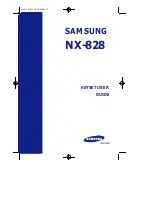
e. If the product has been dropped or housing has been damaged.
f. If the product shows a distinct change in performance.
Battery Safety Instructions
1. Use only manufacturer approved Nickel-Metal-Hydride (NiMH)
rechargeable batteries and charger. Do not use other types of
rechargeable batteries or non-rechargeable batteries. The
batteries could short-circuit, and the battery enclosure may be
damaged causing a hazardous condition.
2. Follow the charging instruction in this manual and instruction
labels and markings in the handset and charger compartments.
3. Battery must be recycled or disposed of properly. Do not dispose
the battery in a fire. The cells may explode.
4. Do not dispose of the battery in municipal waste. Check with local
codes for disposal instructions.
5. Exercise care in handling the batteries in order not to short-circuit
the battery with conductive materials such as rings, bracelets, keys,
pocketknife, and coins. The battery or conductive material may
overheat and cause burn or fire.
6. Do not expose batteries to rain or water.
7. Do not open or mutilate the battery. Released electrolyte is
corrosive and may cause injury to eyes or skin. The electrolyte
may be toxic if swallowed.
8.
We should be careful about the wording of the battery heats up. We
are saying that the heats up is normal and is not dangerous. If there
is unpredicted thing happening, like the malfunction of the charger
which causes fire, we could have legal obligation.
4








































